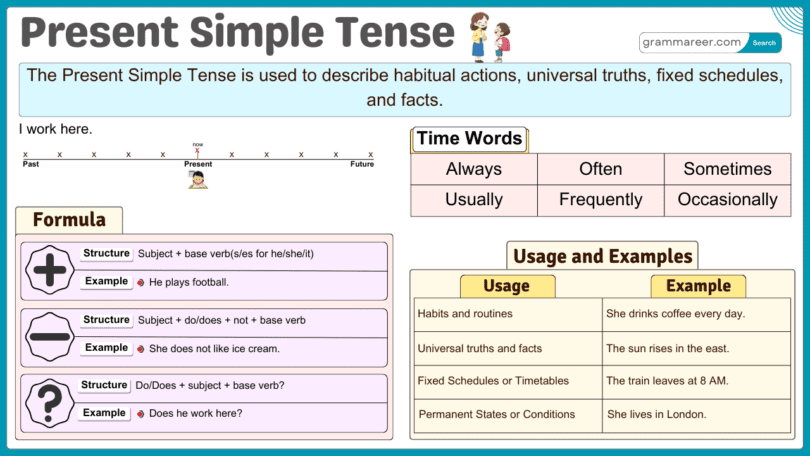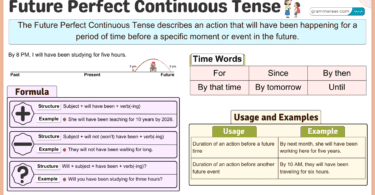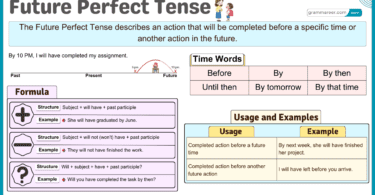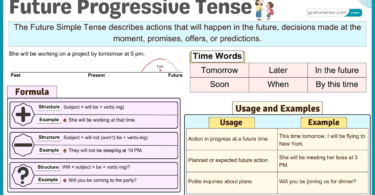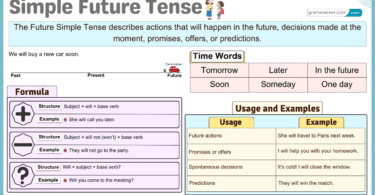The Present Simple Tense is used to describe habits, general truths, schedules, and unchanging situations. It is one of the most basic tenses in English, making it essential for beginners to understand. This tense follows a simple structure, but learners often struggle with verb conjugation and sentence formation. Understanding these rules will help in using English correctly and confidently.
Table of Contents
Sentence Structures of the Present Simple Tense
The Present Simple Tense has three main structures: affirmative, negative, and interrogative sentences. Each structure follows a specific pattern.
Affirmative Sentences
Structure: Subject + Base Verb (+ s/es for he, she, it) + Object
Examples:
- Aisha reads a book every night.
- They play football on Sundays.
In the first example, reads is used because the subject is “Aisha” (she). In the second, play remains unchanged because the subject is they (plural).
Negative Sentences
Structure: Subject + Do/Does + Not + Base Verb + Object
Examples:
- Bilal does not like spicy food.
- We do not watch TV in the morning.
Does not is used for singular subjects (he, she, it), while do not is used for plural subjects (I, you, we, they).
Interrogative Sentences
Structure: Do/Does + Subject + Base Verb + Object + ?
Examples:
- Does Hamza play chess?
- Do they go to school daily?
For singular subjects, does is used, and for plural subjects, do is used.
Double Interrogative Sentences
Structure: Question Word + Do/Does + Subject + Base Verb + Object + ?
Examples:
- What does Fatima study at school?
- Where do they live?
Here, question words like what, where, who, why, when are added at the beginning.
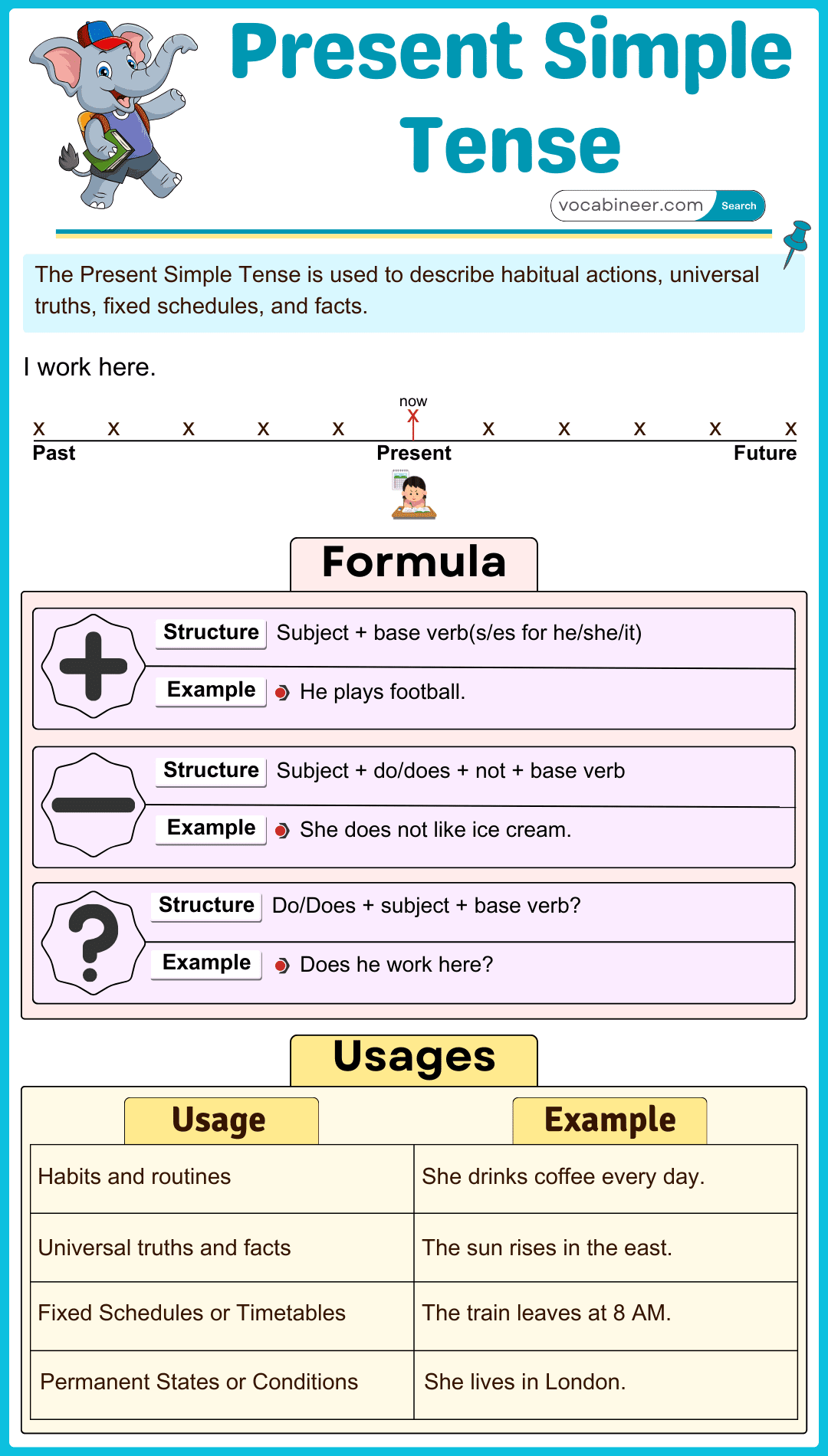
Subject-Verb Agreement in Present Simple
Understanding subject-verb agreement is essential in forming correct sentences. The table below shows how the verb changes with different subjects:
| Subject | Helping Verb | Main Verb Example |
|---|---|---|
| I | do | do homework |
| You | do | play football |
| He/She/It | does | reads books |
| We/They | do | eat lunch |
| The teacher | does | teaches math |
| My parents | do | travel often |
Time Expressions in Present Simple
Time expressions help identify when an action happens. Below are some common ones used with the Present Simple Tense:
- Every day: I go to school every day.
- Always: She always wakes up early.
- Usually: They usually have breakfast at 7 AM.
- Sometimes: He sometimes visits his grandmother.
- Never: We never eat junk food.
Adverb Placement in Present Simple
Adverbs of frequency (always, sometimes, never, etc.) usually come before the main verb but after the verb ‘to be’.
Examples:
- He always drinks tea in the morning.
- They never skip school.
- She is usually happy.
Uses of Present Simple Tense
The Present Simple Tense is used to express daily routines, habitual actions, general truths, fixed schedules, and facts. It also describes permanent situations and universal statements.
1. General Truths & Universal Facts
The present simple tense is used to describe facts that are always true and do not change over time. It is used to express scientific facts, natural laws, and common knowledge. The verb remains in its base form except when using he, she, or it, where “s” or “es” is added.
- The Earth revolves around the Sun.
- Ice melts at high temperatures.
2. Habits & Routines
The present simple tense is used to describe actions that happen regularly or repeatedly. It often includes time expressions like “always,” “usually,” “often,” “every day,” or “sometimes.”
- She drinks coffee every morning.
- They go to school five days a week.
3. Scheduled or Fixed Events
It is used to talk about future events that follow a schedule, such as timetables for transport, school, or other planned activities.
- The train departs at 8 AM.
- Our class starts at 9 o’clock.
4. Feelings, Thoughts & Opinions
It expresses emotions, mental states, and personal beliefs. These verbs (love, hate, think, believe, etc.) usually do not take the continuous form.
- I love chocolate.
- He thinks this movie is interesting.
Short Answers in Present Simple
Short answers in the Present Simple Tense make conversations clear and natural by providing brief responses. They avoid repetition while still conveying the necessary information.
| Question | Short Answer |
| Do you play football? | Yes, I do. |
| Does she like tea? | No, she doesn’t. |
| Do they go to school? | Yes, they do. |
| Does Ahmed speak French? | No, he doesn’t. |
Question Tags in Present Simple
Question tags make sentences sound more natural by turning statements into questions, encouraging interaction. They help confirm information or seek agreement in everyday conversations.
| Sentence | Question Tag |
| You like ice cream, don’t you? | don’t you? |
| He plays football, doesn’t he? | doesn’t he? |
| They go to school, don’t they? | don’t they? |
| She studies English, doesn’t she? | doesn’t she? |
Examples of Present Simple in Use
Here are 12 examples of Present Simple Tense:
- Affirmative:
- Hassan drinks coffee in the morning.
- We live in Karachi.
- Negative:
- She does not like loud music.
- They do not eat fast food.
- Interrogative:
- Do you understand the lesson?
- Does Hina speak Urdu?
Common Mistakes with Present Simple
Many learners make errors in this tense. Here are some common mistakes and their corrections:
- ✅ She works every night.
- ❌ She work every night.
- ✅ They do not like spicy food.
- ❌ They does not like spicy food.
- ✅ Does he play football?
- ❌ Does he plays football?
- ✅ The train leaves at 5 PM.
- ❌ The train leave at 5 PM.
FAQs
The Present Simple Tense is used for daily routines, general truths, schedules, and feelings. For example, “Ali plays cricket on weekends.”
Present Simple is for regular actions (I eat lunch at 2 PM). Present Continuous is for ongoing actions (I am eating lunch now).
Use do/does at the beginning. Example: “Do you like coffee?” For singular subjects, use does (“Does she work here?”).
You May Also Like

